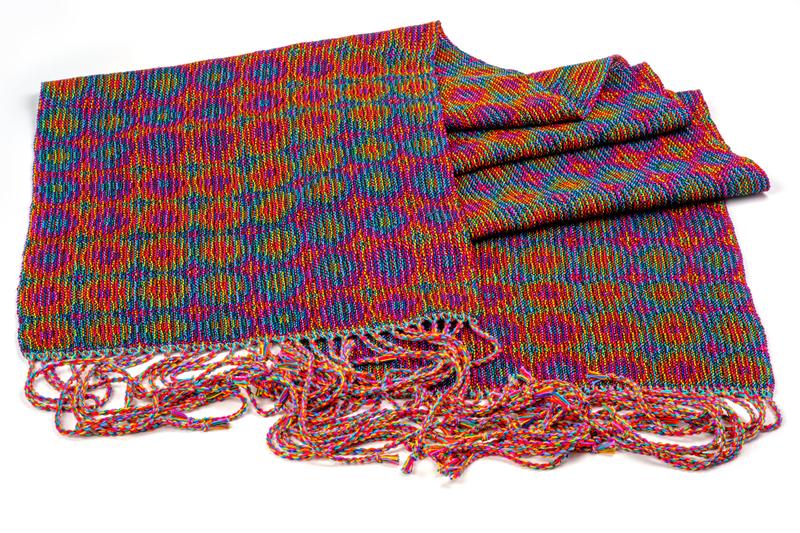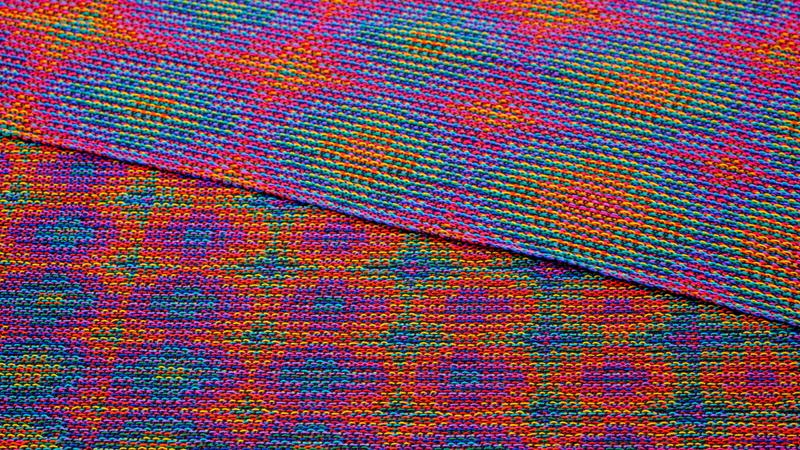My weaving life has been revolving around echoes for months now. The echo-4 and echo-8 techniques explained by Marian Stubenitsky in her book ‘Weaving with Echo and Iris’ have opened up a whole new world of colorful possibilities to me. With any chosen combination of 8 colors in mind, one could go with either the echo-4 or echo-8 technique to make a wonderful project.
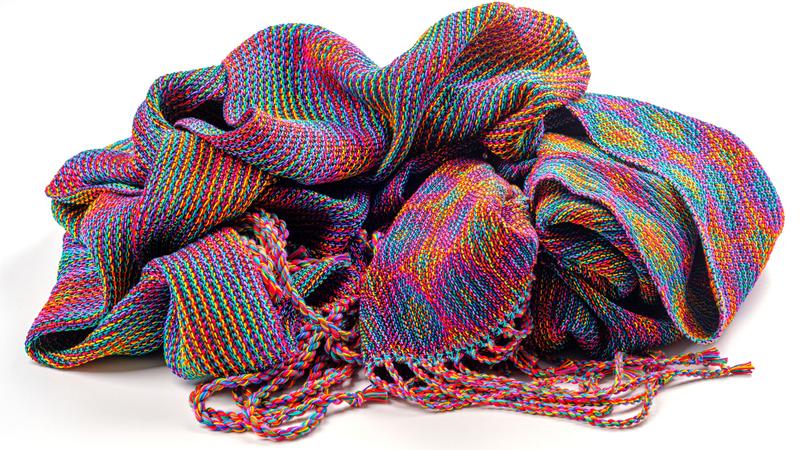
I decided to do a fun experiment to compare cloths yielded by these techniques. I made two shawls in the same yarn, using the same colors and based on the same design line. The only difference is that one shawl uses the echo-4 technique and the other is based on echo-8.
Some backwards calculations
When making a design line for an echo project, you have to bear in mind that the eventual threading sequence can become quite long after adding the parallel lines. A design line of 100 ends might not seem that long, but it will give an 800-end threading sequence with the echo-8 technique. For this reason, I like to start my designing process by making a backwards estimate of the design room I have based on the desired width of the project and a sett suitable for the intended yarn.

I decided quickly on the yarn I would use for the shawls: a size 20 embroidery/crochet cotton I have been wanting to give a try for some time. It comes in a beautifully bright rainbow palette which I planned to pair with a black weft. The thread is a little thinner than the crochet thread I used previously, and I estimated a sett of 12 ends per cm would be a good fit. Aiming for a 40 cm wide shawl, I would need to end up with a threading sequence of about 480 ends. Divide this by the number of parallel lines to obtain the length of the design line: 120 ends for echo-4 and 60 ends for echo-8.
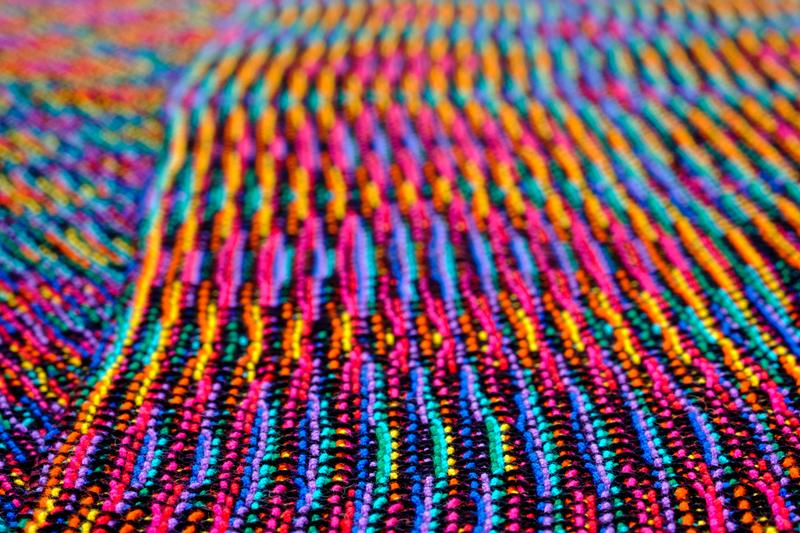
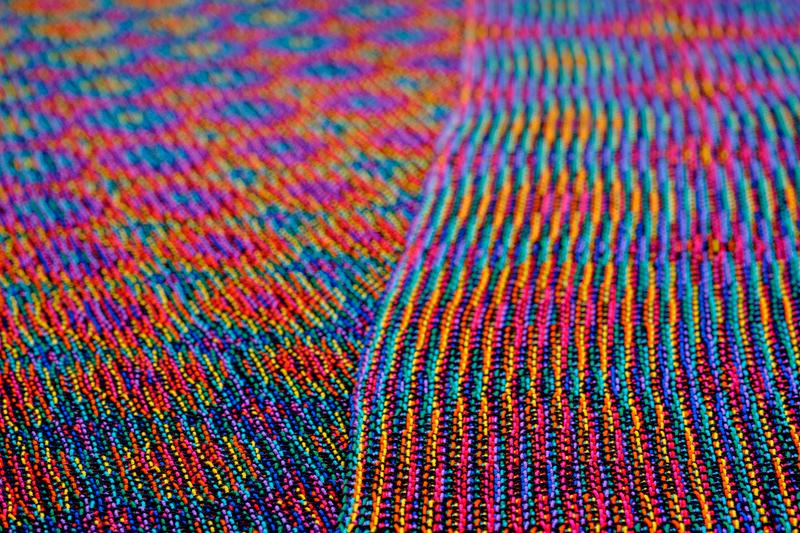
As a natural consequence of the double amount of echoes, the same design line becomes twice as wide in echo-8 compared to echo-4. I did not want to end up with an 80 cm wide shawl for echo-8 or a 20 cm wide shawl for echo-4. Hence I decided to make a design line consisting of multiple motif repeats. In this way, I could simply use double the amount of motifs for the echo-4 compared to echo-8 and end up with two 40 cm shawls.
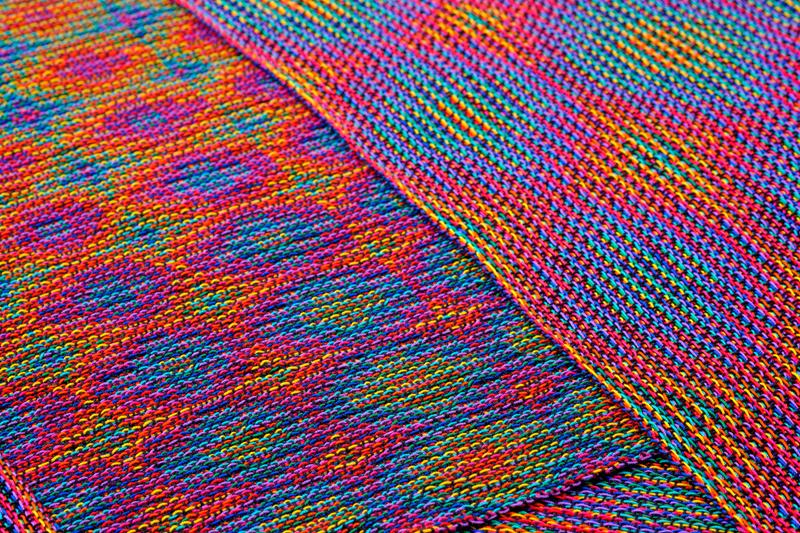
I came up with a little circle-shaped motif covering 5 shafts and 15 ends which perfectly serves as a basis for an advancing repeat. Repeating 4 times gives a design line on 8 shafts with 60 ends, and 4 more repeats gives a 120-end design line. So, my echo-4 shawl would consist of eight advancing circles and my echo-8 shawl would be four advancing circles wide. With this figured out, I was ready for some weaving.

A warped comparison
I was quite excited to make these shawls. Not only was I curious to compare the end results, this was also my first experience with this particular embroidery/crochet cotton. I think I set a new personal record for the number of threads in a warp. My appreciation of thin yarn has really grown, so I plan to break this record again in the not-too-distant future. Of course, those warp ends needed to be threaded. Not once, but twice, as echo-4 and echo-8 cannot be woven on the same threading.
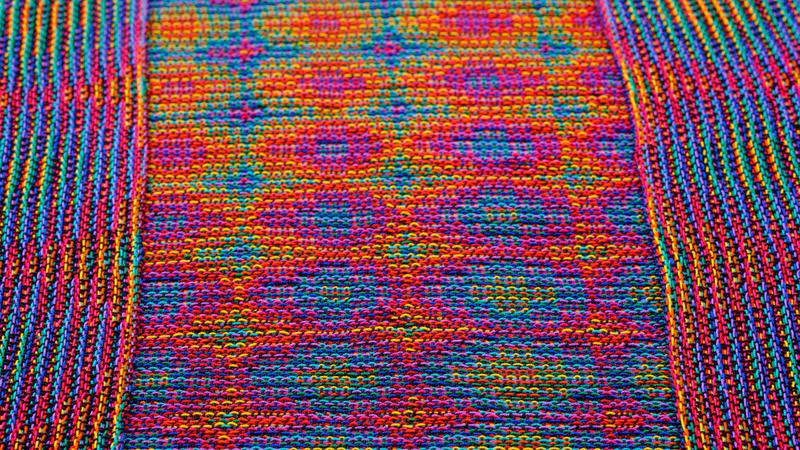
I find that both threading sequences are very doable — once you get into the rhythm. I personally prefer the echo-8 threading a bit over the echo-4 threading. The sequence of the shafts and colors is somehow easier to memorize for me. The threading of echo-4 feels a little more back-and-forth, both in the shaft and color order. Nonetheless, the echo-4 threading was enjoyable, too, once I had found the right rhythm.
So many circles
With the loom ready to go for the echo-4 shawl, I started weaving. The treadling sequence is based on the same design line with advancing circles. The design line circles back to its original position after eight advances, so the eight circles of the echo-4 design line formed a perfect basis for a repeatable treadling sequence. I elongated this design line by a factor 4 and then redrew it onto a 1/3 straight twill network. This gave me the 480-ends long treadling sequence for the echo-4 shawl.
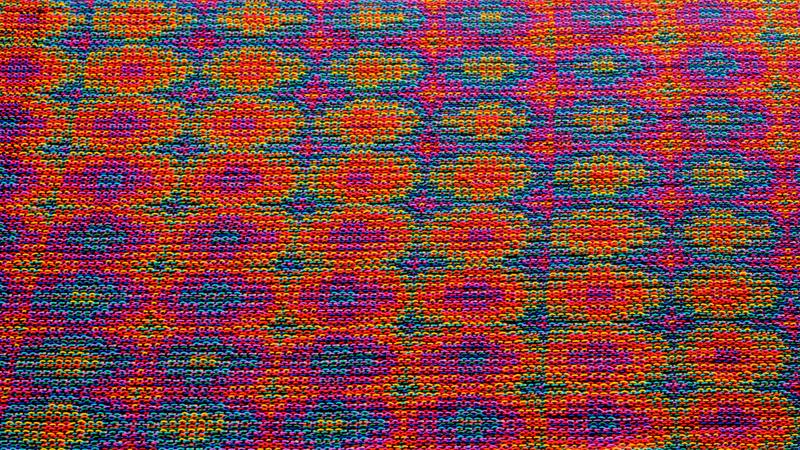
In the echo-8 case, I took the same design line of eight advancing circles. I then elongated it with a factor 8 before redrawing it onto the 1/3 network. As a result, my treadling sequence was a whopping 960 ends long. Yet another personal record.
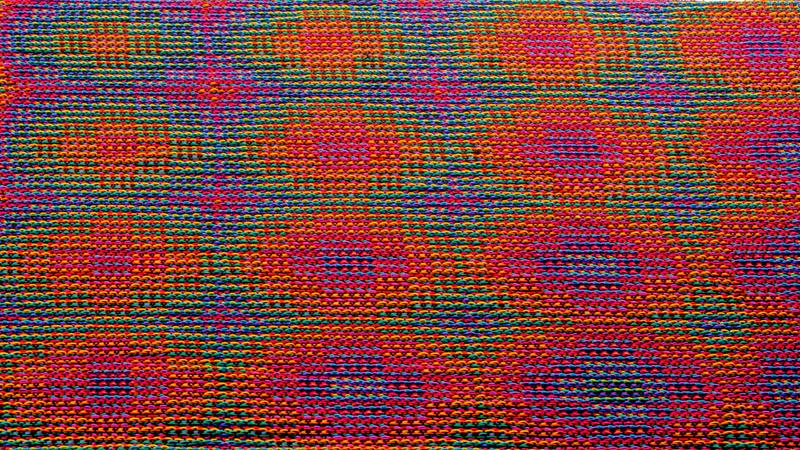
I thoroughly enjoyed weaving the shawls and looking at them side-by-side afterwards. The circles in the echo-8 shawl are double the width and length of the echo-4 circles, meaning that they are four times as large. The echo-4 circles look almost tiny in comparison. The iridescence is beautiful in both echo-4 and echo-8, but probably looks the most outspoken with 8 echoes.
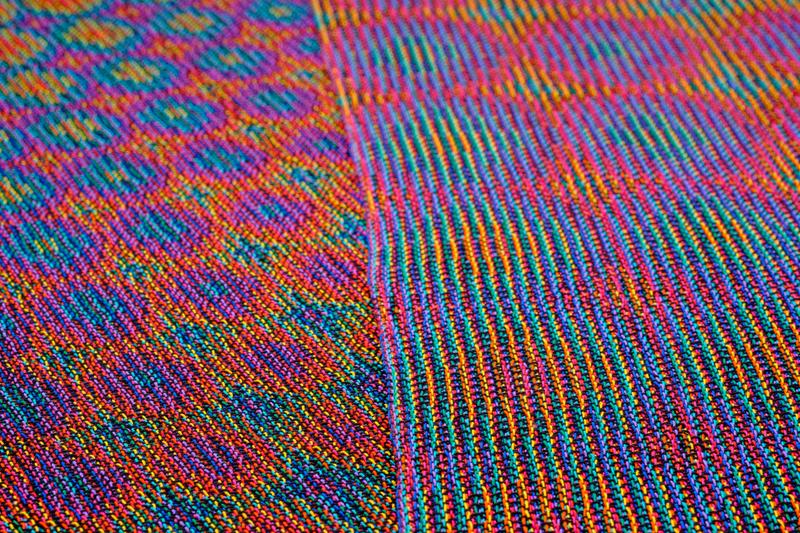
The echo-8 shawl has more and longer floats than its echo-4 counterpart. Both have floats of at most 3 ends in the warp. The echo-8 technique yields floats of 5 in the weft, whereas the weft floats in echo-4 are restricted to 3 ends. I think this is why the echo-8 shawl feels more warp-dominant to me than the echo-4 shawl. In the places where 5-end weft floats occur, the free warp ends find their way to each other.
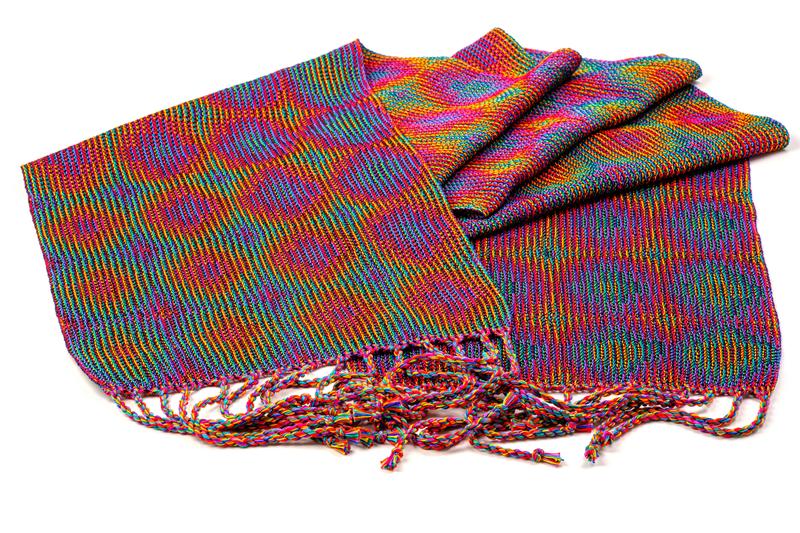
The effect in echo-4 feels really different to me: more balanced in a warp-and-weft kind of way. I do not prefer one effect over the other, though. Both are very pleasing and make for a lovely woven fabric. As such, I like both shawls and have yet to decide on a favorite. An inconclusive yet fruitful experiment.
